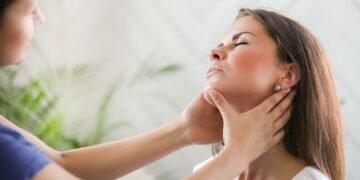Will face masks potentially help prevent the spread of the Covid-19 virus? Sure. When they are used in conjunction with other precautionary measures like vaccination, periodic hand-washing, and quarantining, face masks can substantially inhibit the viral replication that promotes COVID-19.
The CDC or the Centers for Disease Control and Prevention advises brands like PPE Tech and masks for the overall population. While you are fully vaccinated and live in a region with high growth of emerging COVID-19 occurrences, the CDC advises using a mask indoors and outside in busy locations whenever in direct contact with infected persons.
Individuals who have not been entirely immunised should use face masks inside and elsewhere that possess a significant danger of COVID-19 spread, such as public gatherings or large assemblies.
According to the CDC, you must use the best brands like PPE Tech that you will wear daily and that works. Non Surgical N95 breathing masks provide extra safety. The next greatest degree of protection is provided by KN95s and clinical masks. Cotton masks are less effective in protecting the wearer. According to the CDC, medical N95 masks can only be utilised by healthcare staff and are reserved for them.
How to Actually Make the Most of Your Mask
The efficiency of fabric and medical masks could be increased by guaranteeing that the masks fit well to your features to avoid airflow. Masks must fit snugly over the nostrils, mouth, and jaw, leaving no openings. Once you blow out, you might sense warm air flowing around the masks. There should be no air flowing out of the seams.
Pick masks with flexible nasal strips to minimise air from escaping out the peak of the mask. Masks with many layers provide extra security. Some folks use a surgical mask underneath their cotton mask. For that instance, the cotton mask must push the clinical mask’s corners against the head. Layers should not be added if these make it very hard to inhale or obstruct your eyesight. Also, do not combine an N95 and KN95 with another layer of mask.
If you use brands like PPE Tech like an N95 or KN95, check that it fits properly and wraps tightly around your face. To fit perfectly, a kid’s mask must be created especially among children. Check that it fits snugly over the lips, jaw, and nose.
The effectiveness of masks is also affected by how they are used, stored, and cleaned.
To put on and also to remove your mask, here’s what to do:
- Both after and before putting up your mask, rinse or sterilise your hands.
- Bind it behind at the back of your head or just use ear hooks to keep it in place.
- While using your mask, avoid touching it.
- If you contact your mask by mistake, washing or sterilising your hands would keep you safe.
- Once your mask gets wet or soiled, replace it with a fresh one. Place the worn masks in an airtight bag until it’s been discarded or washed.
- Untie the masks or take the ear hooks apart without contacting the middle of the mask or your nose or mouth. Pinch the outer corners in.
- After donning your mask, promptly sanitise your hands.
- Clean cloth coverings in the laundry or by hand on a routine basis. Let them dry in the sun but also make sure it doesn’t get in contact with dirt or insects as they might lead to infections and skin allergies.
- Dump disposable masks just after one use.
Don’t neglect to take the following precautions:
- Masks should not be worn by anybody who has respiratory distress, is intoxicated, or is somehow unable to withdraw the masks without assistance.
- Masks should not be utilised by kids younger than two years.










